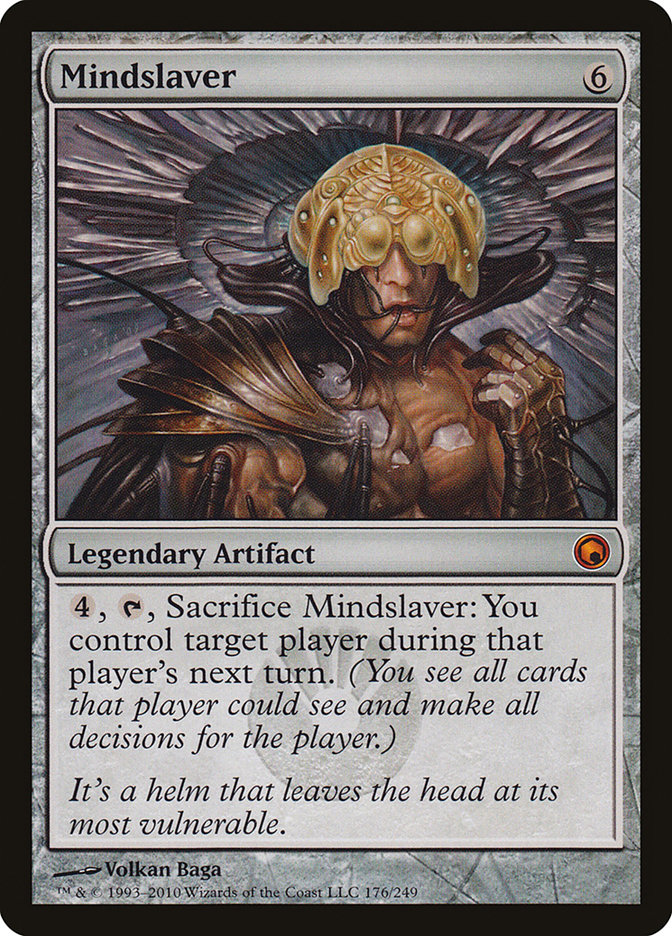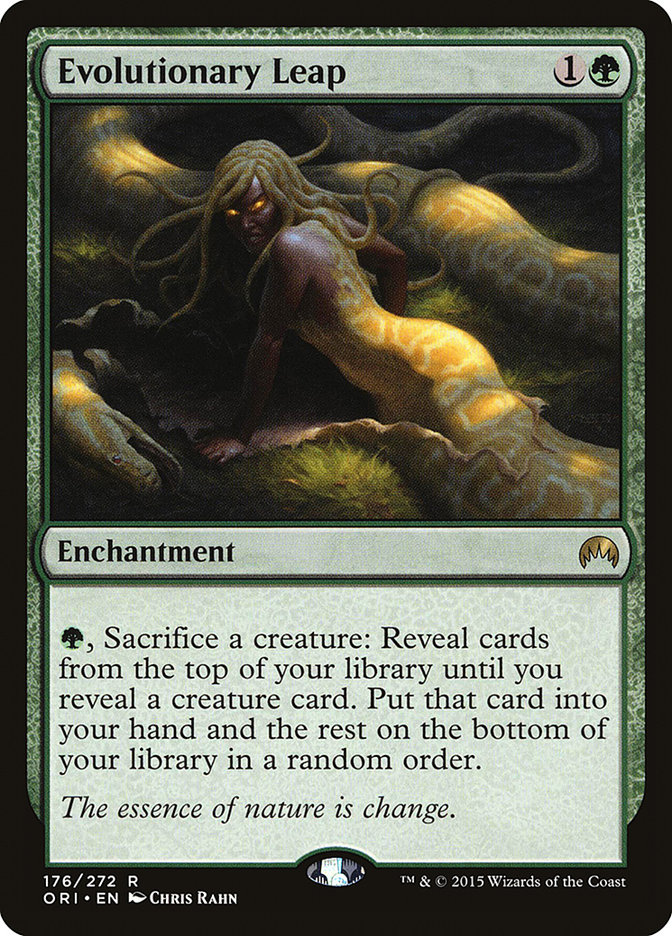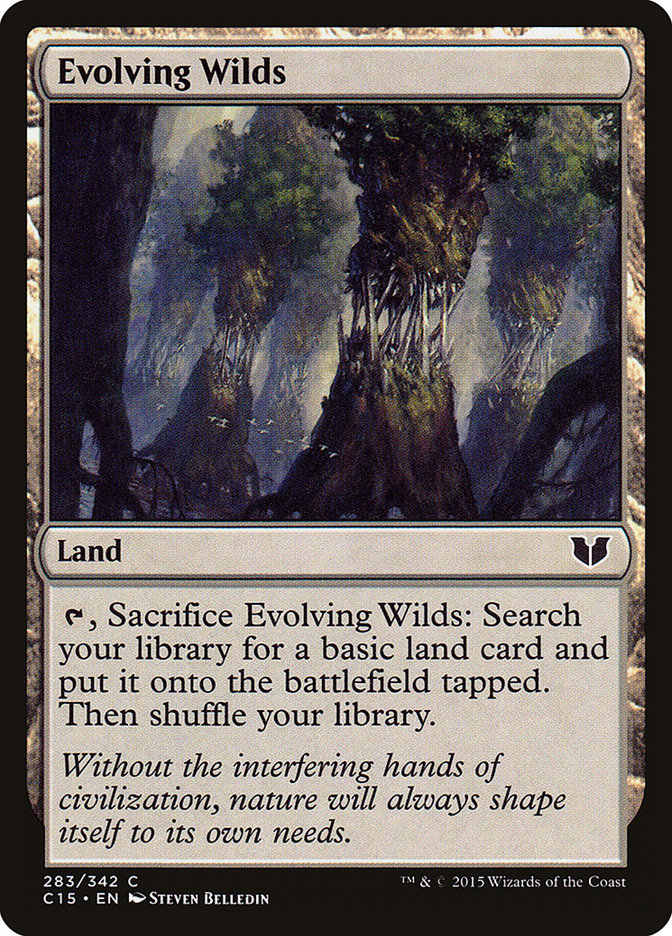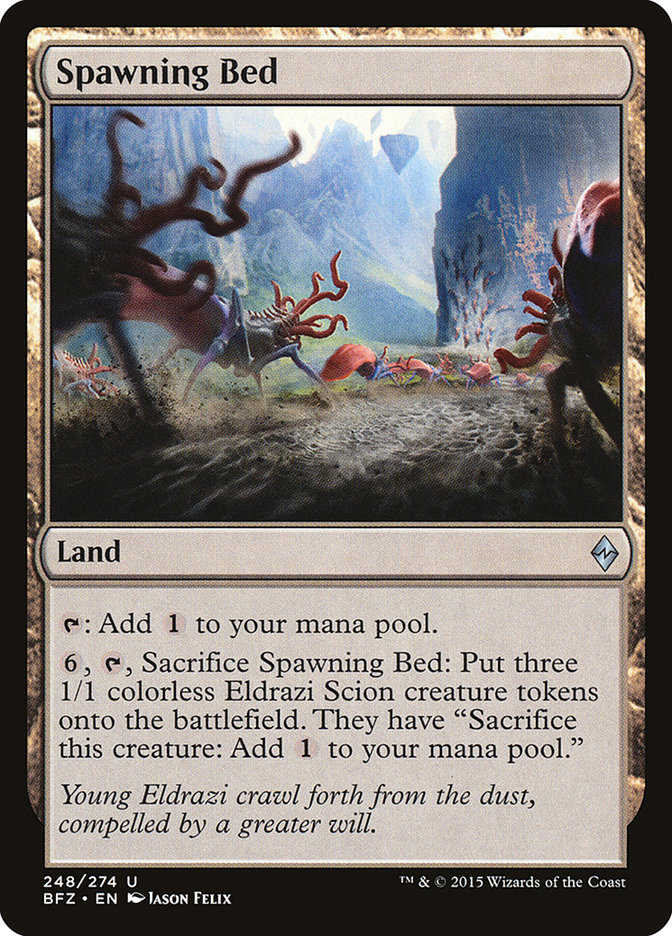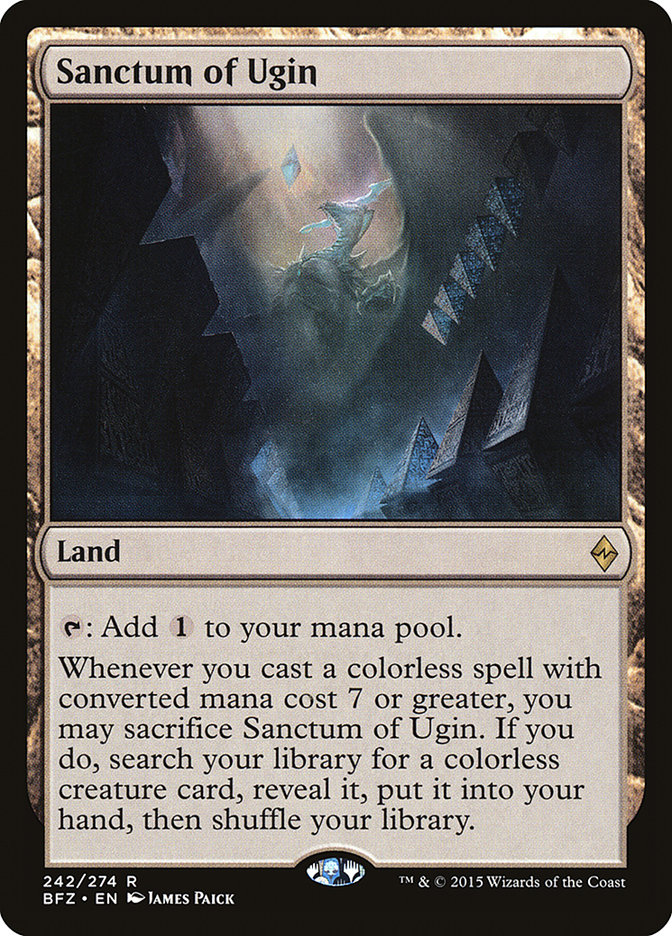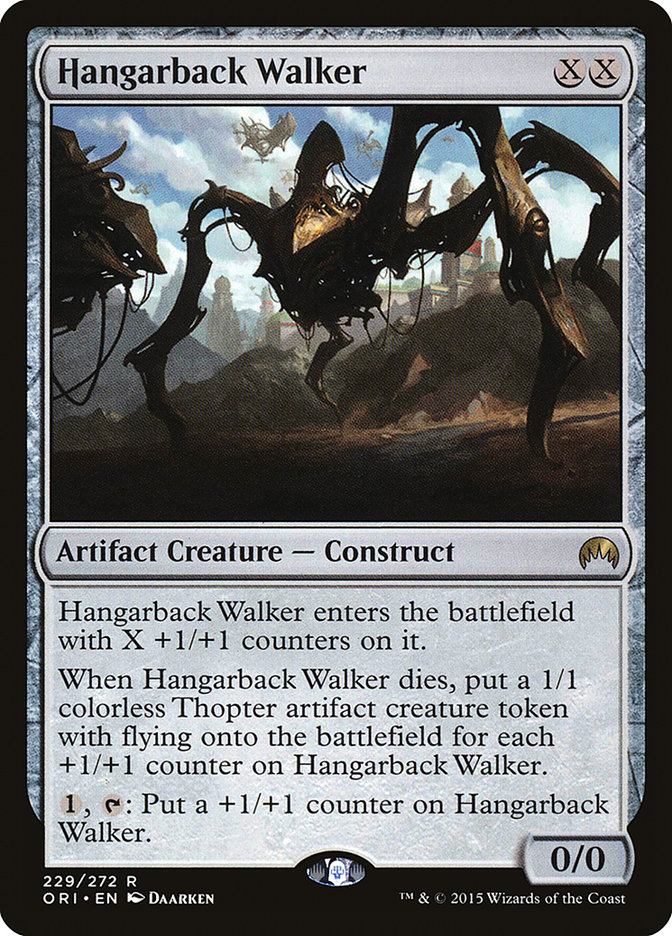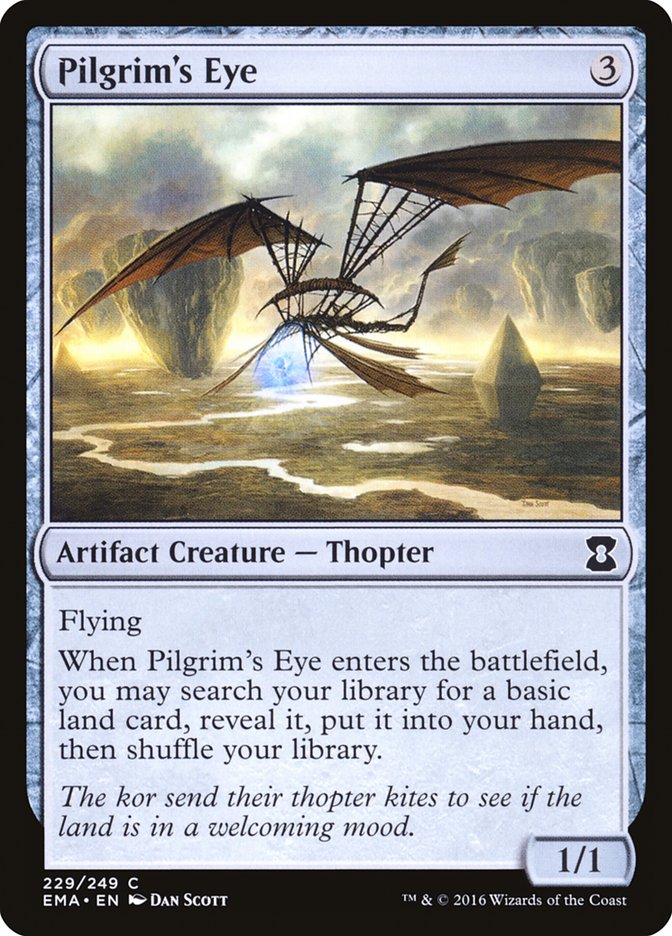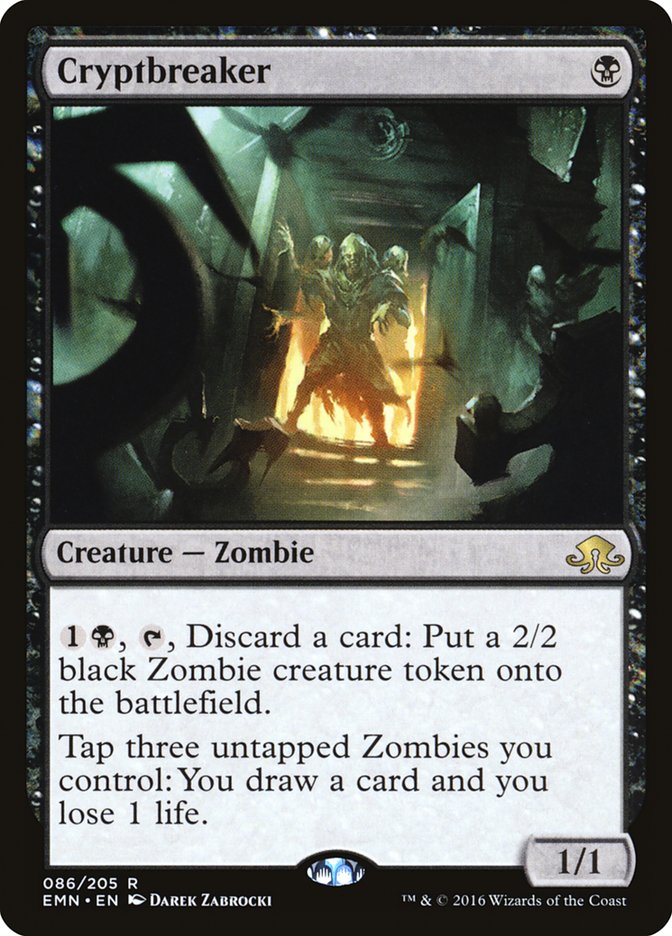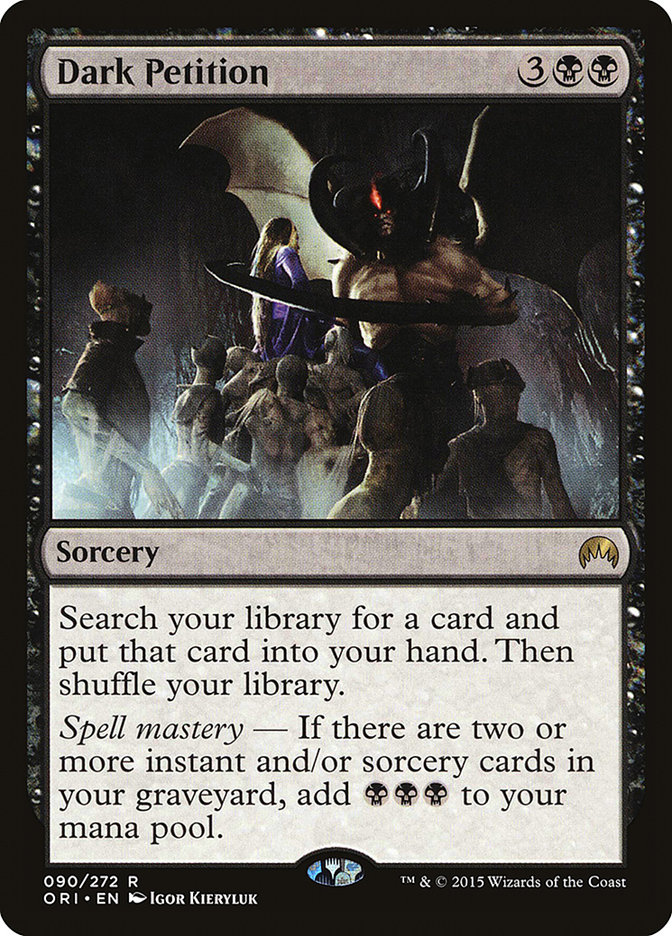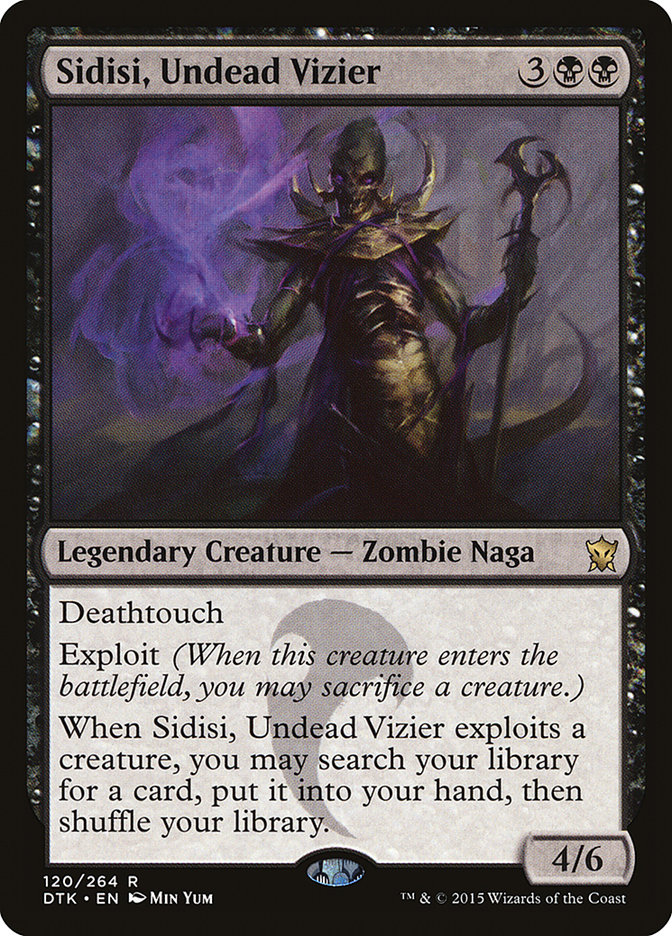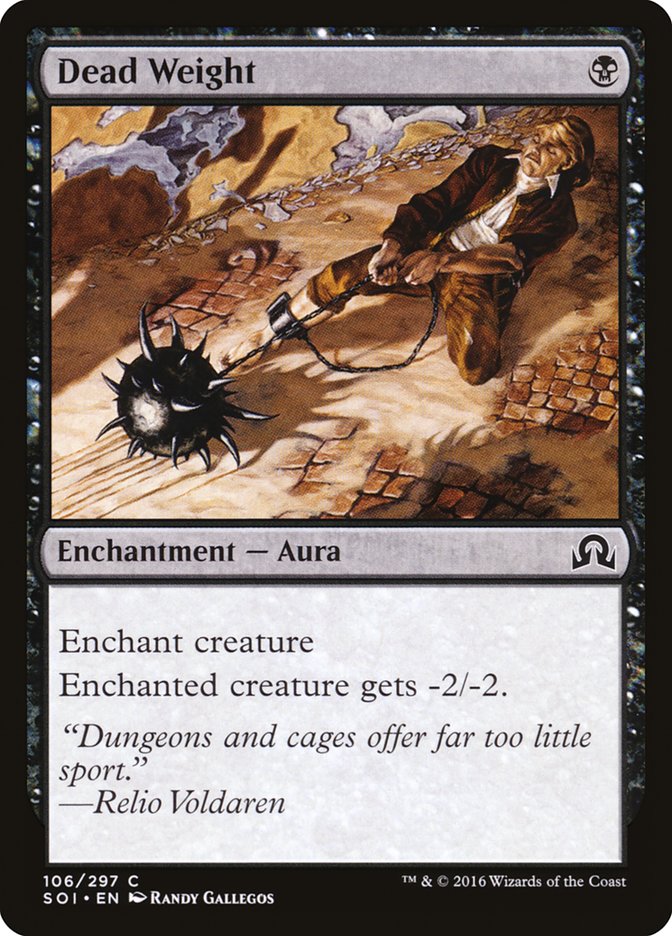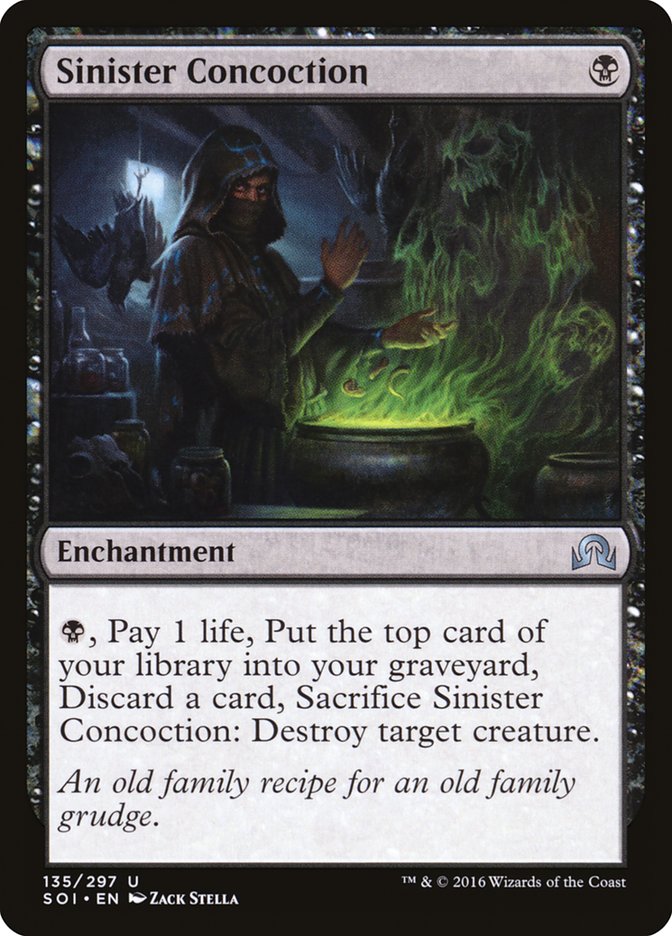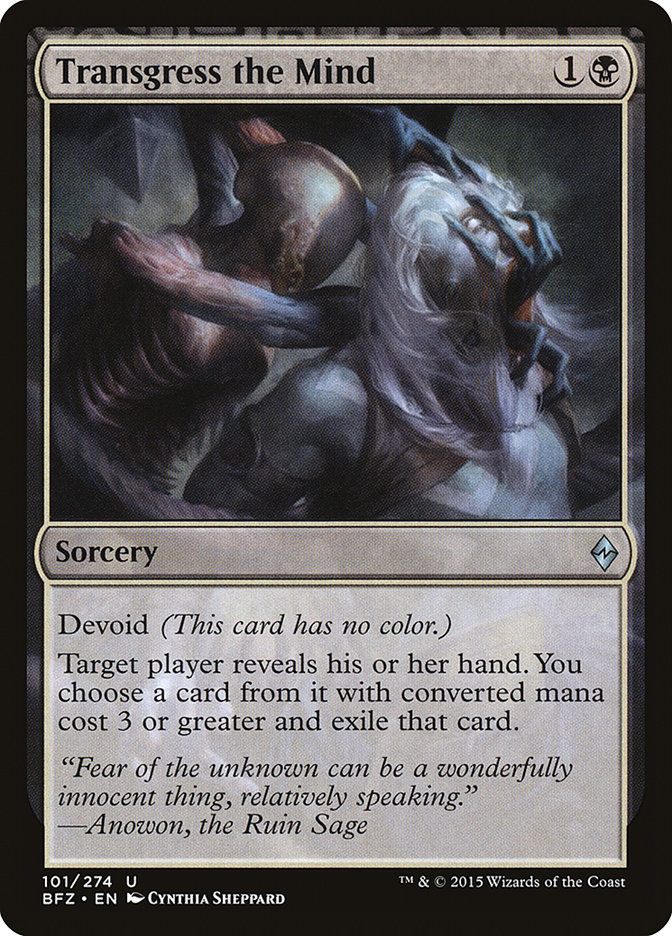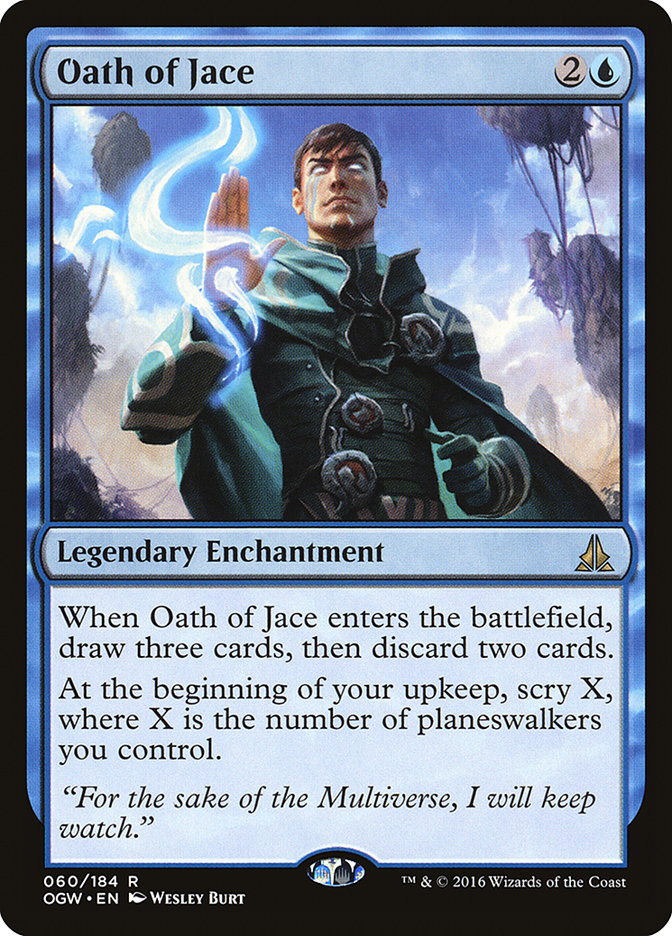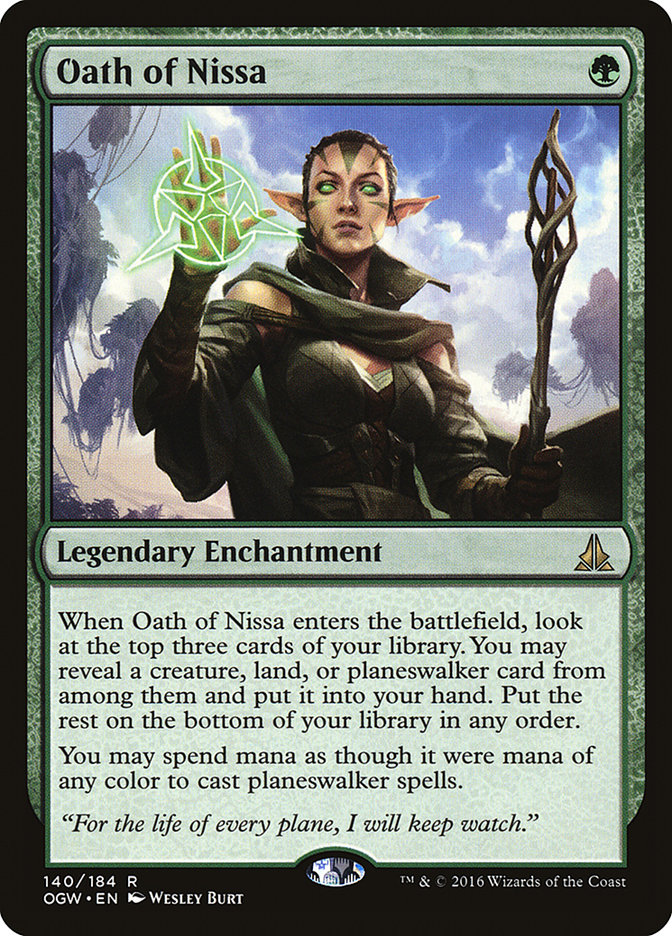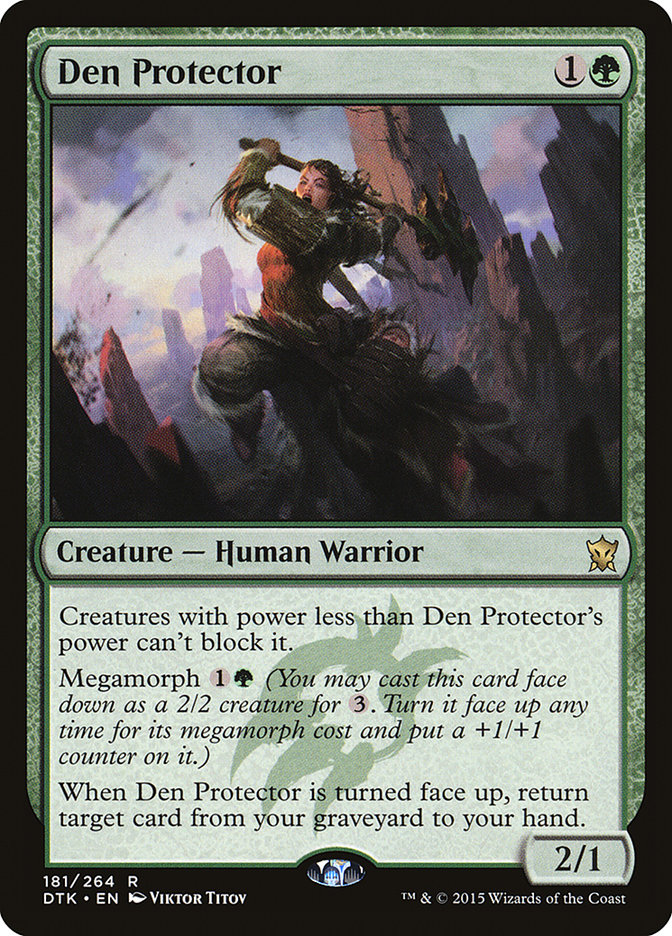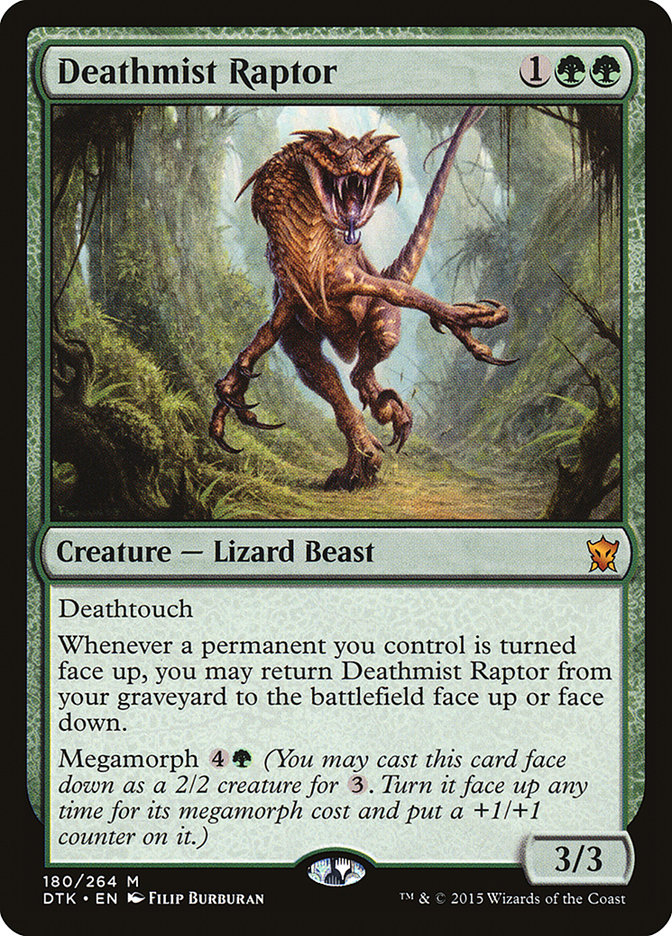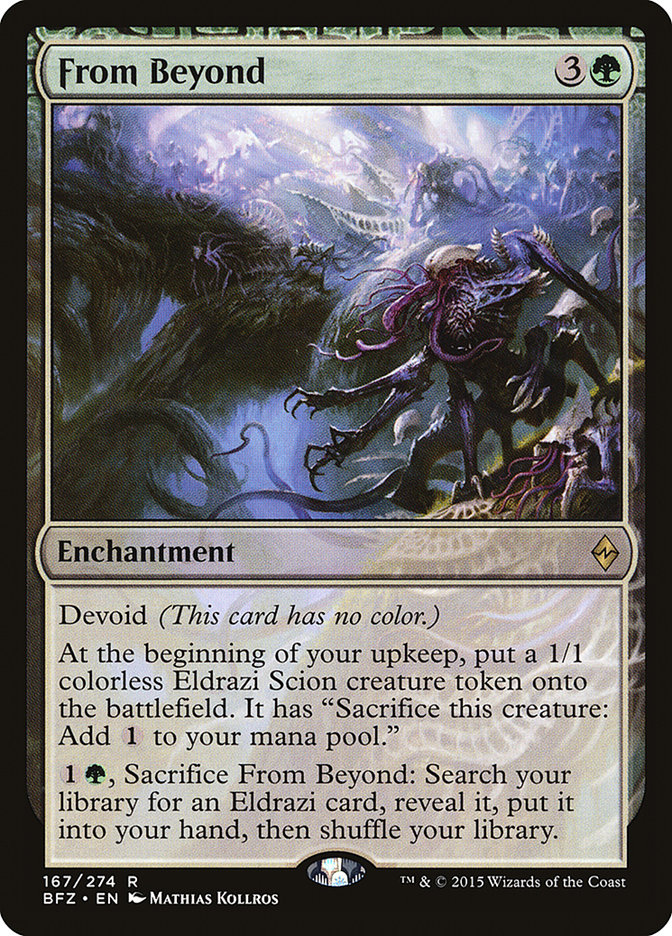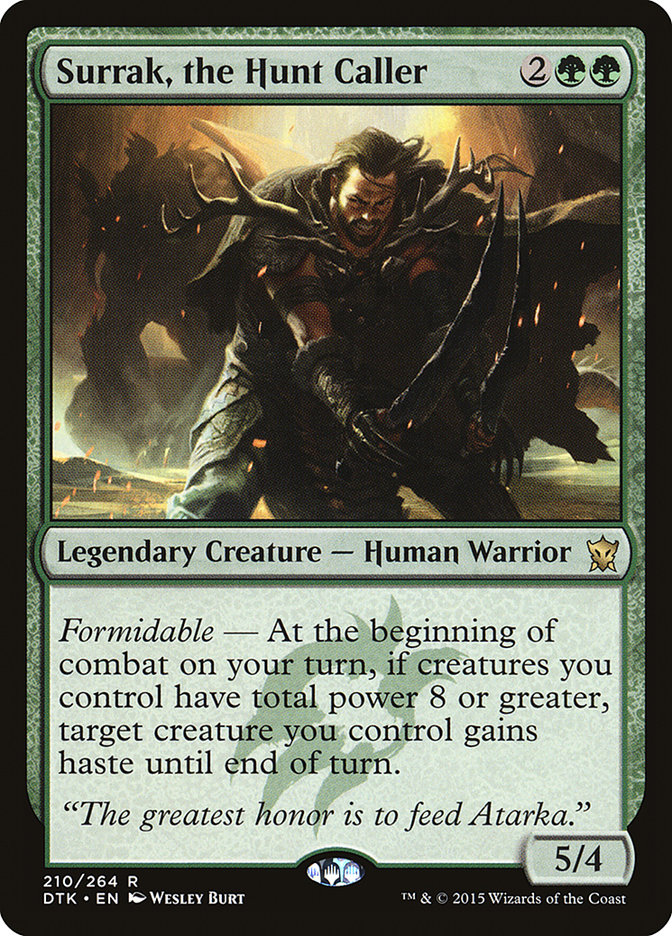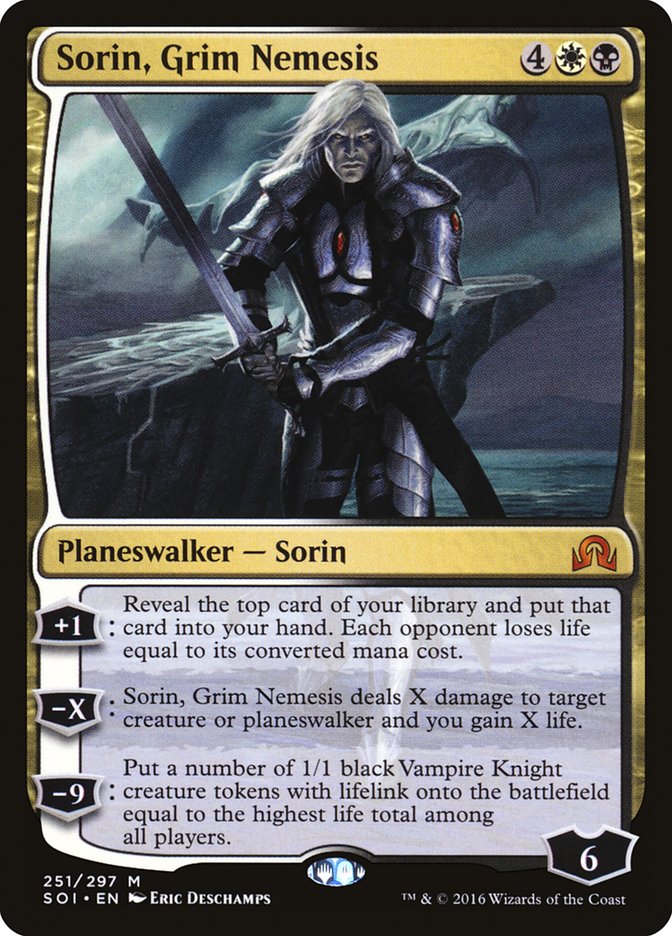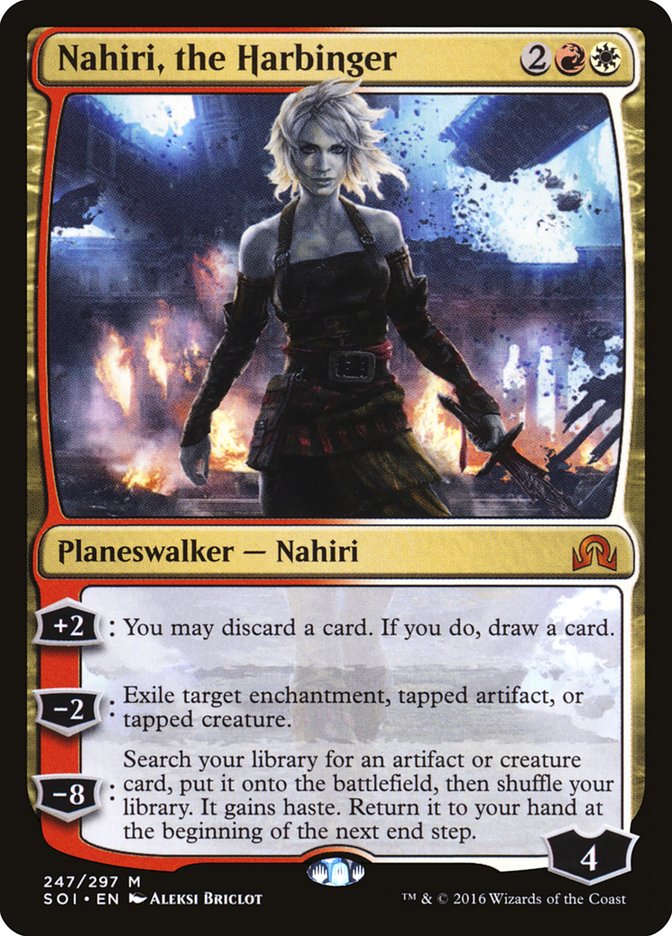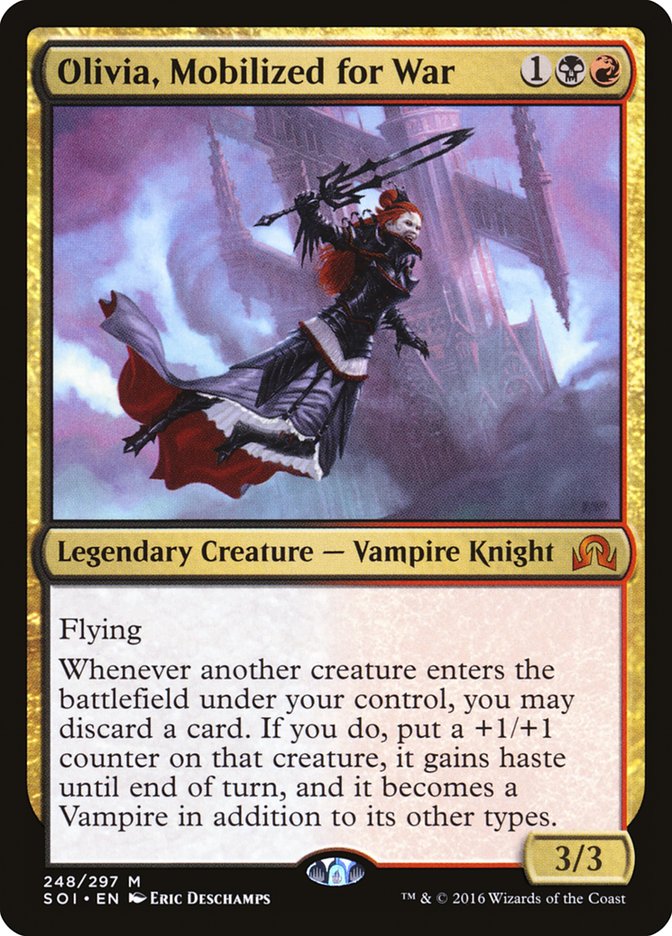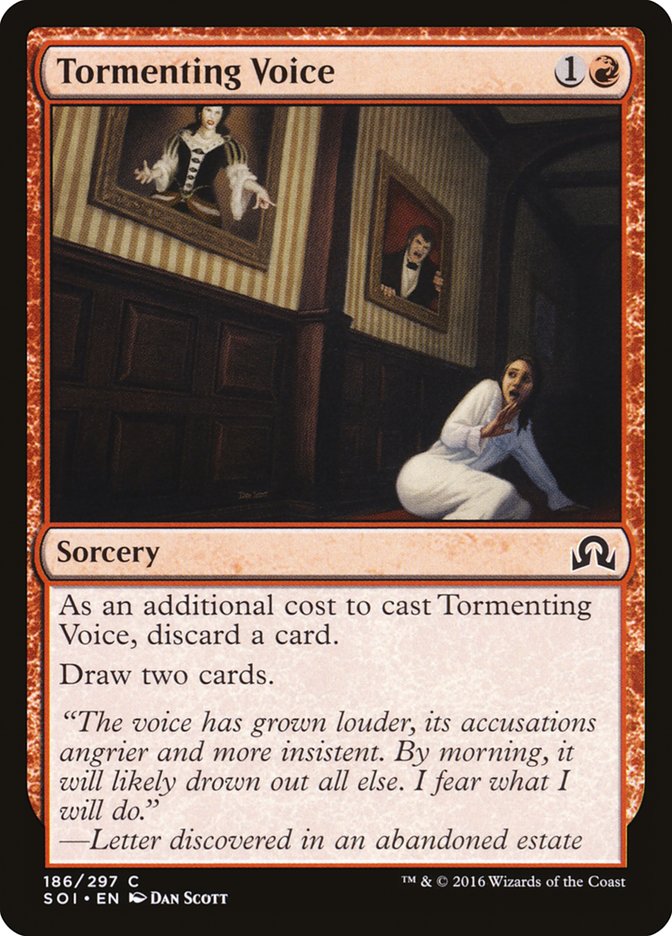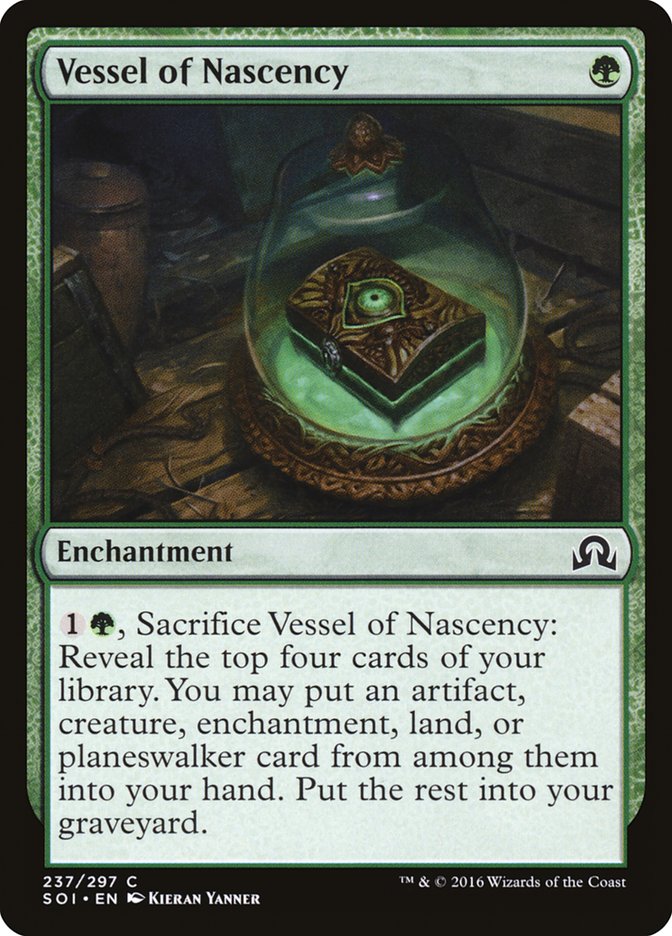I was hoping that we’d learn that the Big Bad of Season 2 of Innistrad, Eldritch Moon, would be Yawgmoth. I can’t help it. I just loved the idea of a bit of a switcheroo on our expectations.
Of course, it makes the most sense that the enemy would be exactly who we imagined it was going to be.
I still chuckle to myself and am a bit surprised to learn that Emrakul, the Promised End is the first and only card with a mana cost of thirteen. That, in itself, is pretty awesome. Like many, many other people, I also loved the flavor of Emrakul, which essentially seems to greatly capture the idea of going mad.
The other day, I played against Emrakul, the Promised End for the first time.
It was pretty rough.
It wasn’t Mindslaver-grade in the level at which it messed up my game, but it was pretty close. I was unfortunate enough to be playing a slower version of G/W Tokens, and let’s just say that my Hangarback Walker, Den Protector, and Evolutionary Leap felt like incredible liabilities. I got particularly unlucky by topdecking a Declaration in Stone.
Creatures (14)
Planeswalkers (8)
Lands (9)
Spells (29)

It wasn’t card-for-card this list (it included a few Eldritch Moon cards), but it was close. The thing that really impressed me was just how much simply casting the card rocked my world. It was, in part, that taking my turn didn’t involve an actual vacuum, but it also involved quite literally a huge spaghetti monster waiting to devour whatever it wanted.
So, what are the actually viable ways to get Emrakul onto the battlefield? Thirteen isn’t an easy number to get to. Luckily, Emrakul, the Promised End will likely almost never get cast for exactly thirteen mana, though I’m sure that will happen some time or other. We’ve gotten used to the idea of delirium, mostly in Limited, but also in Constructed. Emrakul, the Promised End doesn’t just want you to be delirious, it wants you to be Joker levels of mad.
Artifact. Creature. Enchantment. Instant. Land. Planeswalker. Sorcery. (And, uh, Tribal.) In Standard, it is possible to get Emrakul’s cost down to a six. That’s pretty nuts.
One of the keys is to play the right kinds of cards. You may want to have all of these card types represented (or at least a great deal of them), but that doesn’t mean you need to shove in copies of Alchemist’s Vial and Bonded Construct just because they draw a card or fit two traits. If you’re going to be serious about it, you still need to be running serious cards. Yes, you can run cards like Liliana’s Indignation, but then you’re likely watering down your deck.
This isn’t an overwhelmingly comprehensive list, but here are my picks for cards to be using.
There is a good chance that your Emrakul list is going to be several colors, especially given the desire to support planeswalkers. Evolving Wilds is an easy way to start down the path towards delirium and Peak Emrakul Mana.
It might only put a land in your graveyard, but it also does accelerate your mana. There are more ideas we can borrow from the Ulamog decks we’ve already seen.
You may not want to have a ton of Emrakul in your deck. Having just one is great, particularly if you’re going to have creatures in the graveyard. And how on earth would you potentially accomplish that?
Putting an emerge package into your deck can get a critter in the graveyard, and, if you’re running Sanctum of Ugin, it can also serve as a way to move towards finding Emrakul.
Hangarback Walker is already just a great card. In addition, though, it is a great fit here because of its ability to put to card types into the graveyard. Further, Hangarback is a creature that is practically made to die, and so it naturally can fit into an Emrakul deck and still feel like it is accomplishing what it needs to. Pilgrim’s Eye doesn’t have any of the naturally powerful elements of Hangarback Walker, but it is still a solid way to build towards Emrakul, and its inevitable death furthers that goal.
Basically a card that seems ready-made for building delirium, Terrarion can quickly flow through the deck into the graveyard while serving an otherwise useful purpose for a fairly low cost.
It’s cheap, it can help fill your graveyard, and it has an upside. Add to that the realistic potential of having a Zombies sub-theme because you will naturally be filling your graveyard, and there is a dab of potential here.
Thirteen is a lot of mana, and this means there are good reasons to not play a ton of Emrakul, the Promised End. Tutoring for it can be a solution, particularly in a deck which will, again, naturally be filling the graveyard. In addition, this effect is just powerful, and it will allow you to run small numbers of copies of any number of cards that are useful, and help to serve to build a diverse graveyard. Sidisi even offers up a reasonable body if you have something to sacrifice to it.
Killing creatures is just an important reality. Doing so and fitting in the difficult-to-use enchantments is a bonus. Most enchantments stick around, but these will go right where you want them when they’ve done their work.
Disruption is great when you’re hoping for a 13/13 to take over the game. Yes, you still get the effect just by casting it, whether or not the Emrakul resolves, but it sure is a lot worse when you can’t devour some hapless creature because they used a Stasis Snare or countermagic to reduce your fun.
Yes, Liliana, the Last Hope can take things out of your graveyard, but by her very nature, she can put things into it as well. In addition, simply being a planeswalker is a huge bonus.
In Mindwrack Demon we have almost a picture-perfect card for Emrakul: it is a huge, powerful creature in its own right, it naturally helps us fill the graveyard, and it is made even more powerful simply by doing what you’d like the rest of your deck to do. This card seems likely in most Emrakul decks.
Less outright powerful are Gather the Pack and Gisa and Geralf, but they accomplish much of the same trick. By contrast, Grim Flayer seems like it may have the power needed to get the job done. Not as outright powerful as Mindwrack Demon, it could potentially be an awesome partner for the Demon in an Emrakul deck.
If you’re in any of these colors, I like cards like these, all of which are very powerful, can draw you into more cards to fill the graveyard, and help contribute to a diverse graveyard.
Heck, maybe you don’t even have to run Emrakul in your maindeck. If you have enough other reasonable targets for this, I wouldn’t mind a few copies in a blue build.
Here we have two Oaths which could be played in multiples to a useful effect, help you find the cards you’re looking for, and fill up the graveyard with those hard-to-find enchantments.
In a graveyard-focused deck, these two stand out as powerful cards for a grind. Particularly because a small number of Emrakul in a deck could be weak to the problem of accidentally milling all of your Emrakuls into the graveyard, Den Protector makes a natural fit.
Evolutionary Leap can be an awesome fit for a deck that might be running Den Protector / Deathmist Raptor / Hangarback Walker. It also lets you run fewer copies of Emrakul as an added bonus.
This card has seemingly been forgotten about, but it seems like a great natural fit. You get mana acceleration, tutoring for Emrakul, and you even get the ability to fill the graveyard with an enchantment. Even more than that, you also get a stream of creatures that can help you stay alive until the Big Crazy comes down. Nice!
“Take thirteen!”
“Take, uh, fourteen!”
Filling the graveyard with up to two new types is great. Getting rid of an uncastable Emrakul is also great.
“Hey, didn’t you already mention Nahiri?”
Yes, yes I did.
I bring it up again because Nahiri actually fits into a potential plan with Emrakul, the Promised End in a large number of excellent ways. It is one of the more powerful planeswalkers in Standard, and all of its modes complement Emrakul nicely. Yes, you can threaten to hit your opponent for thirteen with Emrakul, albeit without getting the cast trigger, but Emrakul will then bounce back up to your hand, potentially able to be cast and likely with a fairly full graveyard, if the opponent’s even still alive.
Having a couple of copies of Emrakul in your deck isn’t the worst plan, but it will still often be a dead card. Having backup Nahiri targets is likely going to be important, though, in the not unreasonable case that you’ve drawn a copy you can’t yet use – and perhaps more than one. Even a cost of, say, eight, is fairly difficult to manage, and for that you’d have had a lot of work put in to try to make things happen. Nahiri might help you when you have a dead card, but it doesn’t save you entirely.
I suppose I would be remiss if I didn’t mention this card. I actually don’t think that it is powerful enough to really play, but I’m willing to acknowledge that I could be wrong. What it is good at, though, is completely filling up the graveyard to build towards delirium, or, in the case of Emrakul, more craziness than that. While I don’t recommend it, I certainly lost to it, so I end on that card for completeness’s sake.
I actually do have a couple of Emrakul, the Promised End decks that are on my radar for Pro Tour Eldritch Moon. Meanwhile, you can bet that I’ll be keeping my eyes focused on the SCG Tour® in Columbus this weekend. Standard has been on an intriguing change with the new cards from Eldritch Moon, and I’m excited for our first chance to check in on the format, this weekend.
I’ll be in Madison, as I am every weekend after a set is released, drafting like crazy, but I’ll definitely be watching the action in Ohio. Maybe Emrakul will make an appearance!



